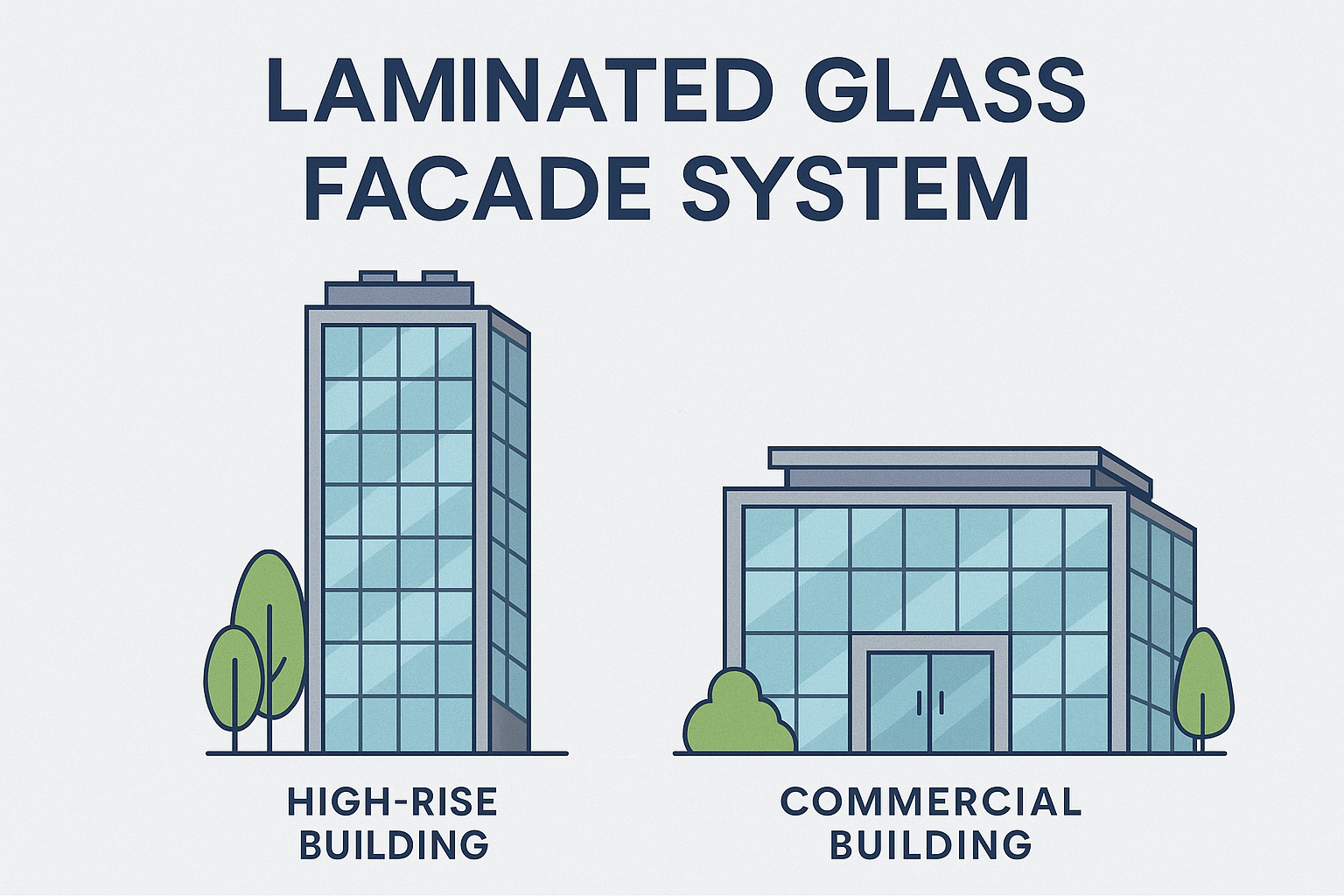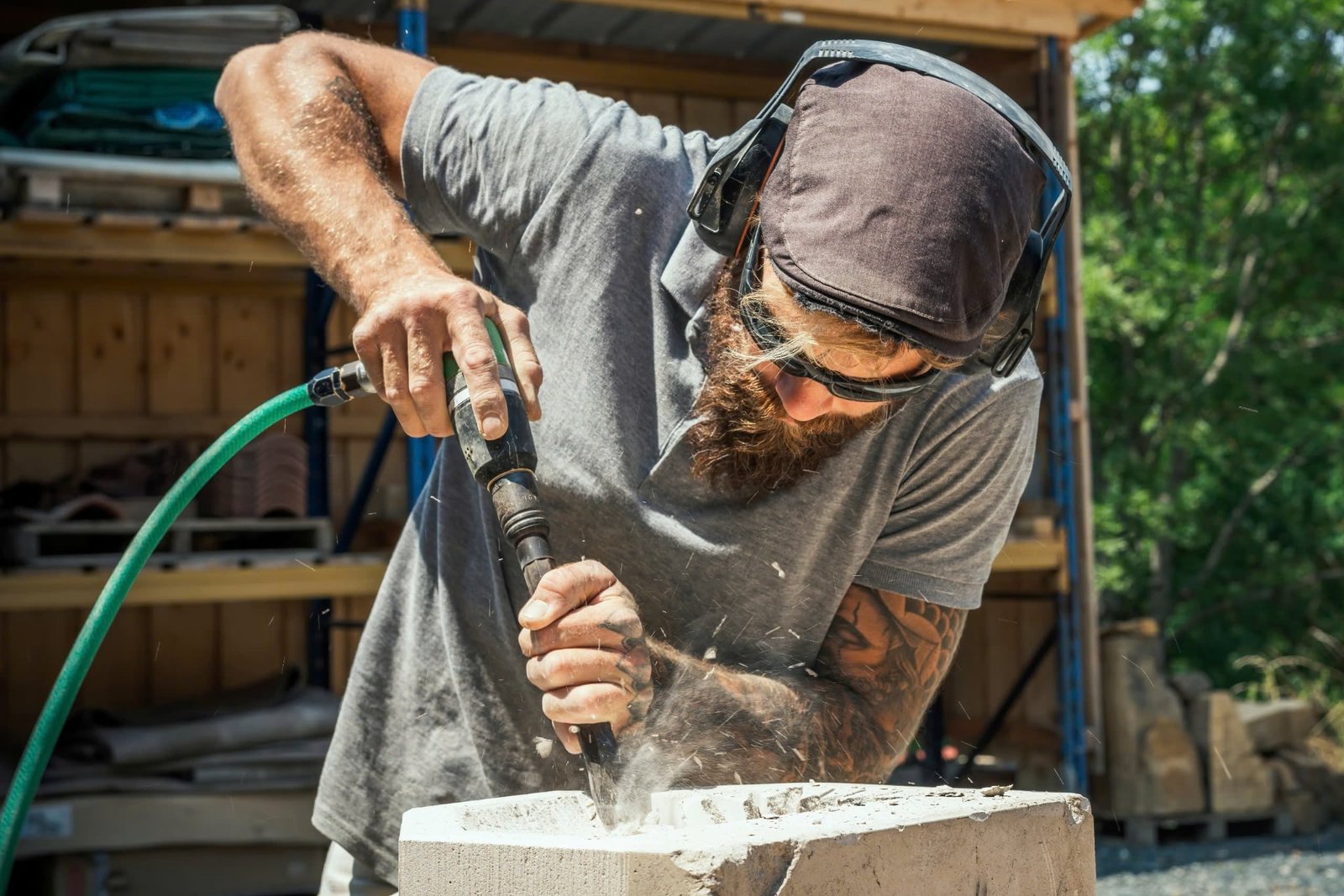
Whether it's a stunning high-rise, a cultural center, or a corporate office, laminated glass facades bring transparency, strength, and sustainability together.
In today’s architectural world, building envelopes must combine aesthetics with high performance. Laminated glass has become the material of choice for creating innovative, safe, and energy-efficient facade systems. Whether it’s a stunning high-rise, a cultural center, or a corporate office, laminated glass facades bring transparency, strength, and sustainability together.
If you’re exploring options for a facade project, understanding how glass laminated systems work, their benefits, and pricing is essential. This guide walks you through everything you need to know about using laminated glass in facade systems.
What Is Laminated Glass?
Laminated glass is a type of safety glass composed of two or more sheets of glass bonded together by an interlayer, commonly polyvinyl butyral (PVB) or ethylene-vinyl acetate (EVA). The interlayer serves multiple purposes: it holds the glass together if shattered, enhances sound insulation, and blocks harmful UV rays.
This construction ensures that even when broken, the glass remains largely intact, protecting occupants and pedestrians below.
For more about general applications, see:
🔗 Where is Laminated Glass Used
Why Laminated Glass Is Perfect for Facade Systems
Uncompromised Safety
Safety is the foundation of any facade design. Since facades are exposed to wind, weather, and possible human impact, glass used on building exteriors must meet strict safety codes. Safety laminated glass provides this assurance. If impacted by debris, earthquakes, or other forces, the laminated unit holds together, avoiding dangerous fallout and providing continued protection.
This is especially important for:
- High-rise skyscrapers
- Urban commercial centers
- Airports and train stations
- Public gathering spaces
Superior Impact Resistance
Facade glass must endure everything from wind pressure to accidental hits from maintenance equipment. Laminated glass is specifically designed to withstand high loads without catastrophic failure, making it a reliable choice for:
- Storm-resistant structures
- Seismic zones
- Protective facades in crowded areas
Noise Reduction Capabilities
In busy cities, noise pollution can drastically affect building comfort. Glass laminated with special acoustic interlayers significantly reduces external sound, creating peaceful interiors even on bustling streets.
This benefit is why many modern office towers, hotels, and residential buildings use laminated glass in their facades to offer a premium living or working experience.
Energy Efficiency and UV Protection
Facades can be major sources of heat gain or loss. Laminated glass can be combined with solar control coatings or tints to improve a building’s energy performance:
- Reduces cooling and heating loads
- Filters UV rays (up to 99% UV protection)
- Protects interior furnishings and finishes
By maintaining transparency while controlling energy flow, laminated glass facade systems contribute to LEED certifications and other green building standards.
Design Flexibility with Laminated Glass Facades
Unlike basic glazing, laminated glass offers remarkable versatility:
- Clear laminated facades: Maximize natural light with minimal color distortion.
- Tinted laminated facades: Offer aesthetic variety and glare reduction.
- Fritted and patterned laminated facades: Add artistic elements while reducing solar gain.
- Colored laminated facades: Enhance building identity with vibrant colors.
- Switchable laminated glass: Transition from transparent to opaque for dynamic facades.
With countless customization options, architects can deliver both stunning visuals and advanced performance.
Installation Types in Laminated Glass Facade Systems
Depending on design goals and structural needs, laminated glass can be integrated into various facade types:
- Curtain wall systems: Lightweight aluminum frames supporting laminated glass units.
- Point-supported glass facades: Laminated glass fixed with minimal hardware for maximum transparency.
- Structural glazing facades: Glass bonded directly to the structural frame without traditional supports.
- Spider systems: Laminated glass panels connected through spider fittings for a modern, frameless look.
Choosing the correct system ensures safety, performance, and aesthetic harmony.
Price of Laminated Glass for Facade Systems
The price of laminated glass for facades depends on multiple factors:
- Glass thickness (common options: 6.38mm, 8.76mm, 10.76mm, 13.52mm)
- Type of interlayer (standard PVB, acoustic, SGP structural interlayer)
- Surface treatments (low-E coatings, tints, decorative fritting)
- Size and complexity of the panels
| Laminated Glass Facade Type | Estimated Price per m² |
|---|---|
| Standard Laminated Glass Panels | $40 – $70 |
| Acoustic or Solar Control Laminated Glass | $60 – $100 |
| Custom Colored or Printed Laminated Glass | $90 – $150+ |
Custom projects, larger sizes, and specialty coatings can affect pricing. For precise estimates, it’s important to contact certified laminated glass manufacturers.
Advantages of Using Laminated Glass for Facades
- Enhanced safety for building occupants and pedestrians
- Superior impact resistance against storms and accidents
- High sound insulation for quieter interiors
- UV and solar control to protect interiors and improve energy efficiency
- Design versatility through clear, colored, fritted, or patterned options
- Compliance with international building codes for facade glazing
These advantages make laminated glass not just an option—but often a requirement—for modern high-performance buildings.
Related Applications Beyond Facades
Laminated glass is also widely used in:
- Balcony railings
- Overhead canopies
- Interior glass partitions
- Staircase balustrades
- Skylights and roof glazing
For detailed examples, explore:
🔗 Laminated Glass for Balconies and Facades
Conclusion
Incorporating a laminated glass facade system isn’t just about achieving a sleek, modern look—it’s about investing in a structure that prioritizes safety, performance, and occupant comfort. From stunning all-glass facades to decorative tinted walls, laminated glass offers unparalleled possibilities for innovative architectural designs.
Its ability to resist impact, reduce sound, block UV, and provide superior energy efficiency makes laminated glass an essential material for forward-thinking projects worldwide.
Whether you’re working on a new skyscraper, a museum, or a stylish residential tower, choosing glass laminated facade systems ensures your design meets the highest standards of beauty, safety, and sustainability.
Ready to transform your facade project?
🔗 Laminated Glass for Balconies and Facades
Learn more about broader applications:
🔗 Where is Laminated Glass Used

